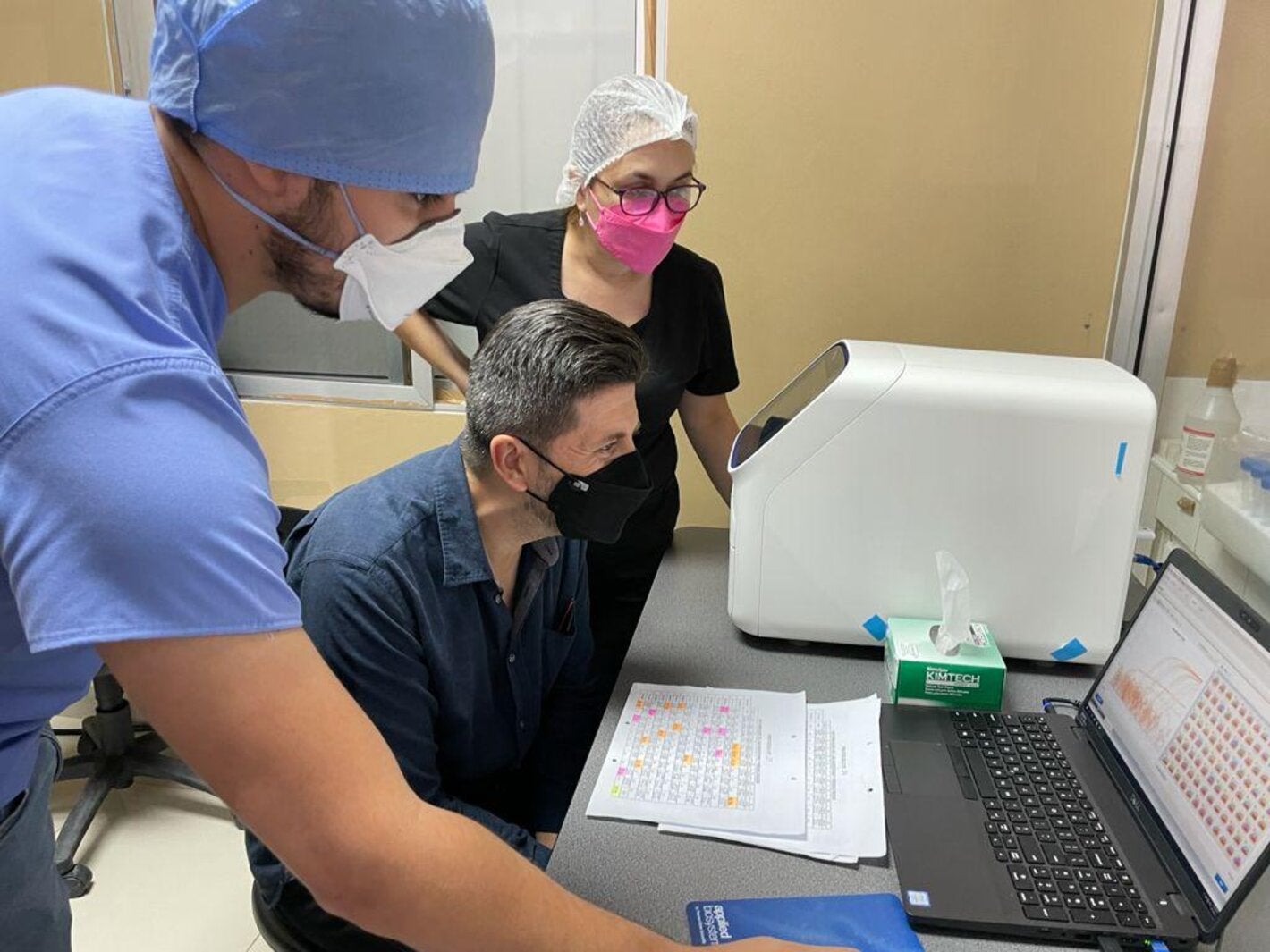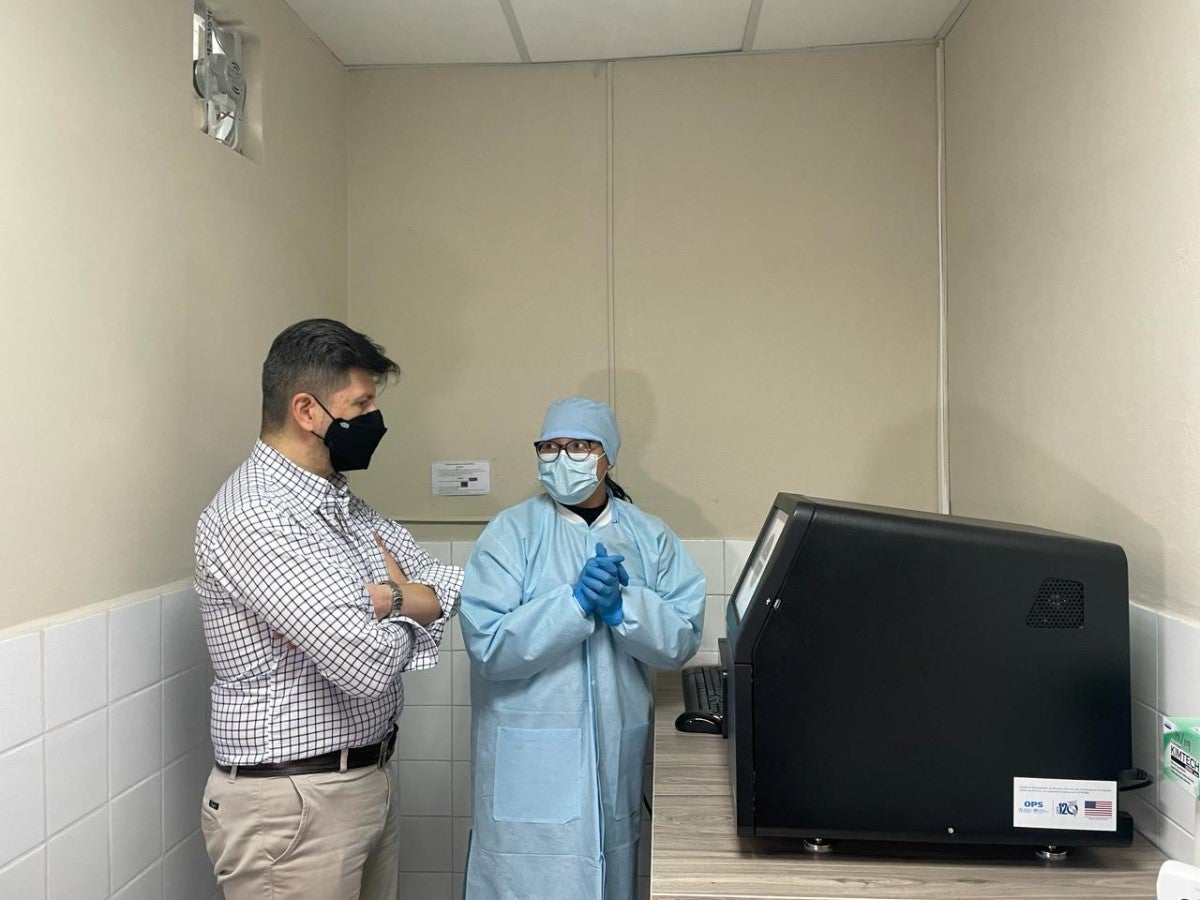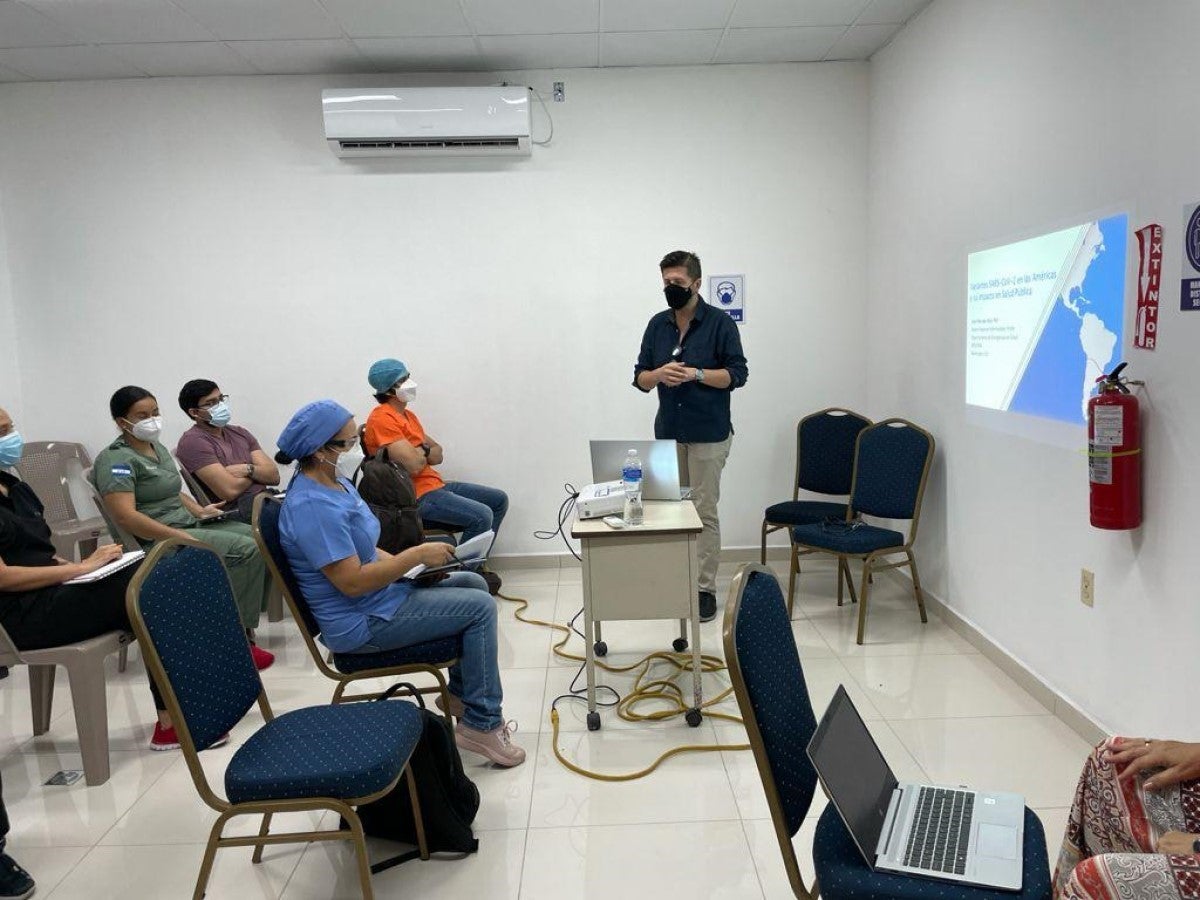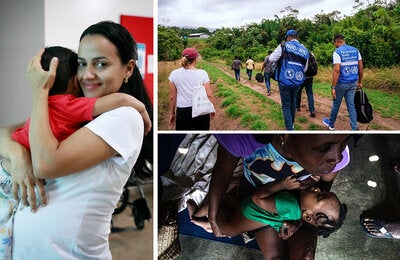
Washington, DC, February 23, 2024 (PAHO) — On February 26, 2020, Brazil recorded the first case of COVID-19 in its territory, marking the beginning of the pandemic in Latin America and the Caribbean.
Since its emergence on December 30, 2019, in Wuhan, China, the SARS-CoV-2 virus left a devastating trail globally, with 774 million cases and 7 million deaths recorded to date. The Americas were hard hit, accounting for 25% of all cases and 43% of all deaths, making it the region with the highest number of COVID-19 deaths worldwide.
Over time, the virus has undergone changes and evolved, becoming more transmissible but less lethal. In May last year, WHO declared the end of COVID-19 as a Public Health Emergency of International Concern, but infections continue to occur, with more than half a million cases reported worldwide in the last month.
On the fourth anniversary of the arrival of SARS-CoV-2 in the region, we spoke with virologist Jairo Méndez, regional advisor on viral diseases at the Pan American Health Organization (PAHO), about what we have learned about the virus that causes COVID-19.
Four years after the arrival of COVID-19 in Latin America and the Caribbean, what have we learned about this virus?
The pandemic left a profound impact at the global and regional level, the dimensions of which we are still fully understanding. A fundamental lesson is the importance of collaboration and solidarity among countries in dealing with crises of this magnitude. We recognized the gaps in our preparedness and the need to strengthen our capabilities. We learned to rely on science, which allowed us to develop safe and effective vaccines in record time. However, we have also realized that the virus is highly adaptable and can change rapidly, requiring us to continue to closely monitor its evolution and explore potential natural reservoirs. Surveillance networks led by PAHO have been established to monitor the presence of new coronaviruses. Although vaccines continue to be effective, we must remain alert to any changes in the virus and continue to learn about it every day to protect public health.
What information do we have today about the different variants of the SARS-CoV-2 virus and its evolution?
Several variants of the SARS-CoV-2 virus have been identified since its emergence, starting with Alpha in late 2020, followed by Gamma and Delta, which had a major public health impact. Subsequently, Omicron emerged in late 2021, classified as a variant of concern due to its rapid spread. Although the virus has continued to evolve, no significant increase in variant severity or mortality has been detected. While several variants, such as JN.1, are currently being monitored, none have characteristics that make them more aggressive or lethal so far.
What were the main challenges in controlling the virus in the region?
The challenges were numerous and significant. First, the initial lack of understanding about the virus and how to deal with it was daunting. We did not have the necessary tools to detect and diagnose it effectively. Then, the rapid change of the virus and the emergence of variants posed additional challenges for monitoring and control. However, despite these, progress has been made in integrating epidemiological and virological surveillance systems, which enable us to detect and respond more effectively to future threats.
What aspects would you highlight as achievements in the surveillance and diagnosis of SARS-CoV-2?
As a region, there were several aspects that we managed effectively. For example, in a very short period, we established a network of laboratories at the regional level capable of rapidly diagnosing the virus, which allowed us to respond quickly. Surveillance systems were rapidly adapted, building on previous experience in working with influenza.
Can COVID-19 be considered just another flu?
Respiratory viruses, including COVID-19 and influenza, have the potential to cause serious harm, especially in vulnerable populations such as the elderly or those with pre-existing medical conditions. We cannot underestimate the seriousness of this illness or assume it is just a cold. The need to protect ourselves and be vigilant is crucial, as a significant outbreak could easily overwhelm healthcare systems. Influenza, commonly called the flu, is not a trivial illness and can have serious consequences, especially for those most at risk. COVID-19 is still present and, although it has become more predictable, we must be always prepared.
What is the likelihood of another pandemic like COVID-19?
The factors that contribute to the emergence of new viruses and pathogens are still present. While we cannot predict when or how it will occur, we can be better prepared by maintaining constant vigilance and rapid response preparedness. This underscores the importance of the International Health Regulations and transparency in communication between countries to detect and respond to new threats effectively.
What are some of PAHO’s current priorities to strengthen regional preparedness and response to viruses such as SARS-COV-2?
PAHO played a crucial role during the pandemic in several areas, for example, by supporting surveillance of respiratory diseases, facilitating the implementation of diagnostic protocols for COVID-19 and debunking false information. In addition, we developed evidence-based clinical guidelines and supported the implementation of vaccination plans. Currently, we are focused on strengthening regional capacity to deal with future pandemics, reducing dependence on external inputs and promoting solidarity among countries to share information and provide mutual support. One lesson learned is that science must guide actions in response to health emergencies, and we hope that confidence in it will grow and that this will happen in the next emergency.





